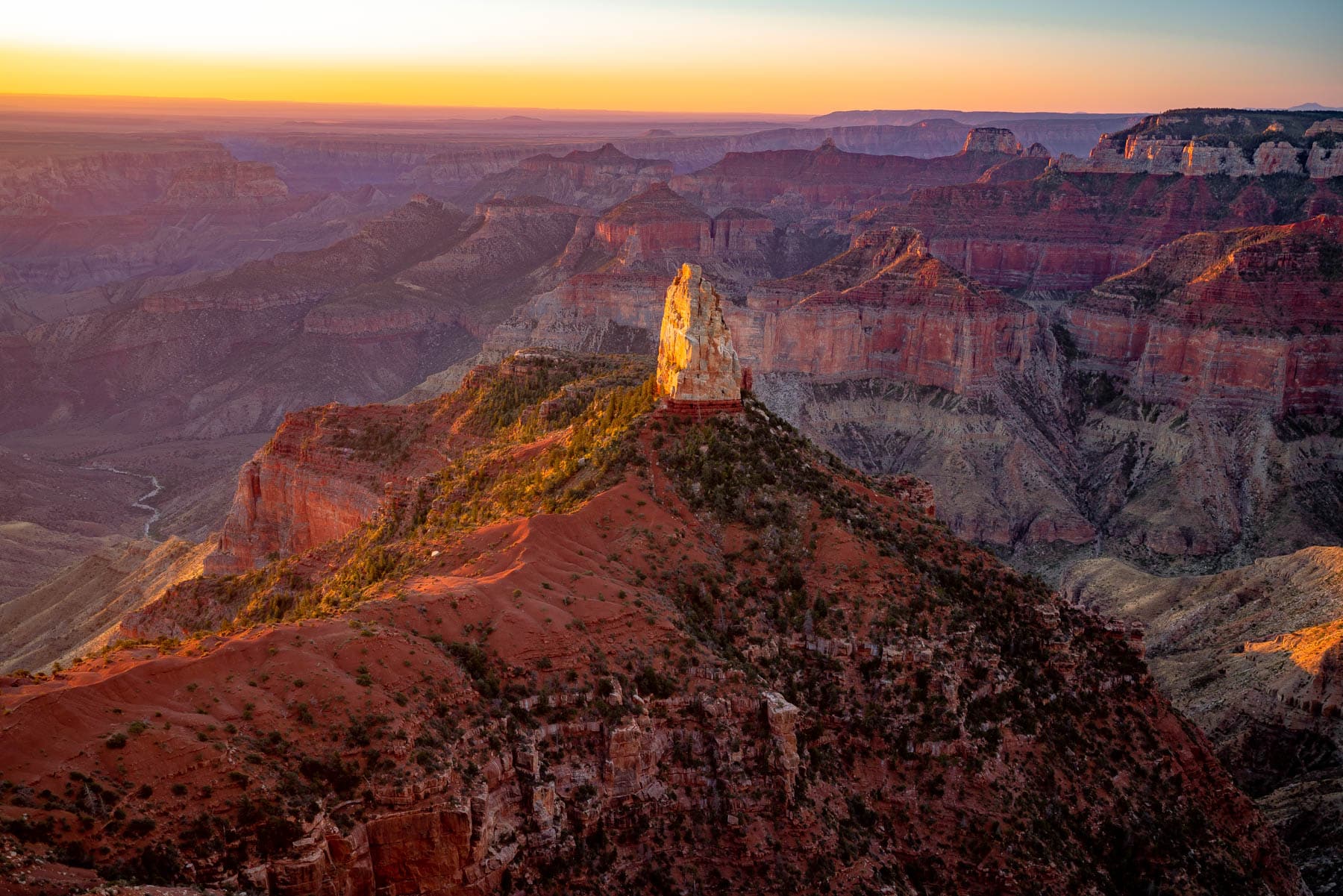
Article Summary: National Parks Near Phoenix
There’s so much more to the great southwest than Sun Devil Stadium on a Saturday night.
In this article, we’ll familiarize you with the incredible national parks that are within a day’s drive of downtown Phoenix.
I’ve been to so many of these amazing places since retiring from teaching in 2018. Did I mention that I taught history? I spent a lifetime teaching about the history behind these momentous sites. Then I got to see them firsthand. And now I’m sharing the stories of these incredible places with you. It doesn’t get any better than that!
Phoenix is the capital city of Arizona and is located in the central region of the state. People may know it for its year-round sun, desert beauty, and world-class resorts and golf. It also offers sophisticated urbanscapes, southwest culture and lots of outdoor adventure.
But best of all there are 10 national park sites for you to see on your next visit to the Grand Canyon State.
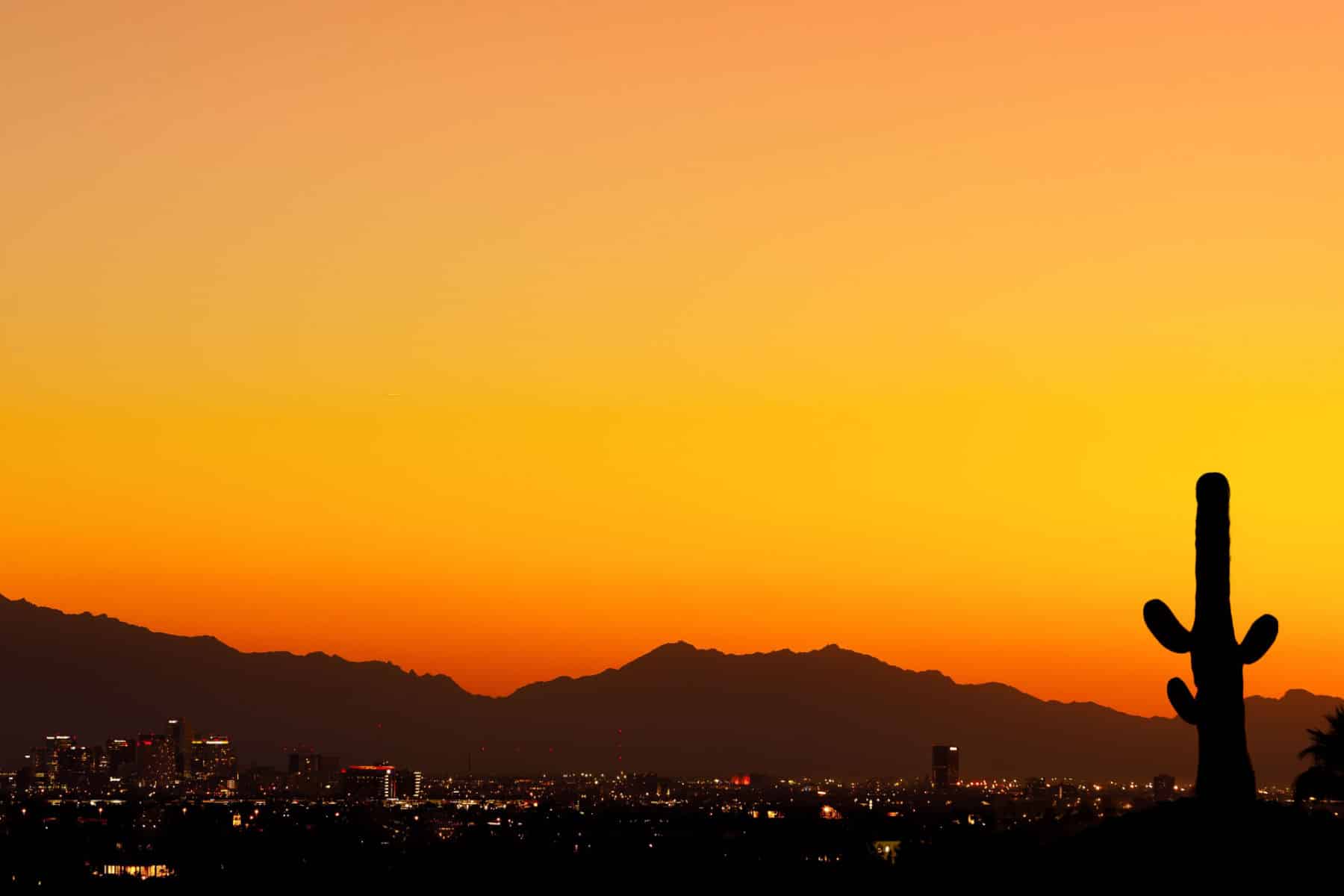
So, What Is A National Park?
We get asked that question a lot because there’s a difference between a “national park” and a “national park site.” To help you understand that difference you might want to check out our article titled: What Is A National Park Really?
If you’re planning a trip to the Phoenix area then one book that I recommend you pick up is Moon 52 Things to Do in Phoenix & Tucson: Local Spots, Outdoor Recreation, Getaways.
Now let’s go ahead with 10 reasons why you’ll want to hop in your car and make a day’s drive from Phoenix to one of these truly amazing places.
Table Of Contents: National Parks Near Phoenix
Best National Parks Near Phoenix
1. Casa Grande Ruins National Monument
Distance From Phoenix: 1 hour (55 miles) via I-10 E.
Casa Grande Ruins National Monument is a preserved ancient Native American Hohokam ruin located in Coolidge, Arizona. The monument is named for the large four-story structure that is its main feature, known as the “Casa Grande” or “Great House”.
The history of Casa Grande Ruins National Monument can be traced back to the Hohokam people, who lived in the area from approximately AD 500 to 1450. The Hohokam were known for their sophisticated irrigation systems and innovative architecture, and the Casa Grande is one of the most significant structures that they built.
The exact purpose of the Casa Grande is still unknown, but it is believed to have served as a community center, a religious temple, or a defensive fortress.
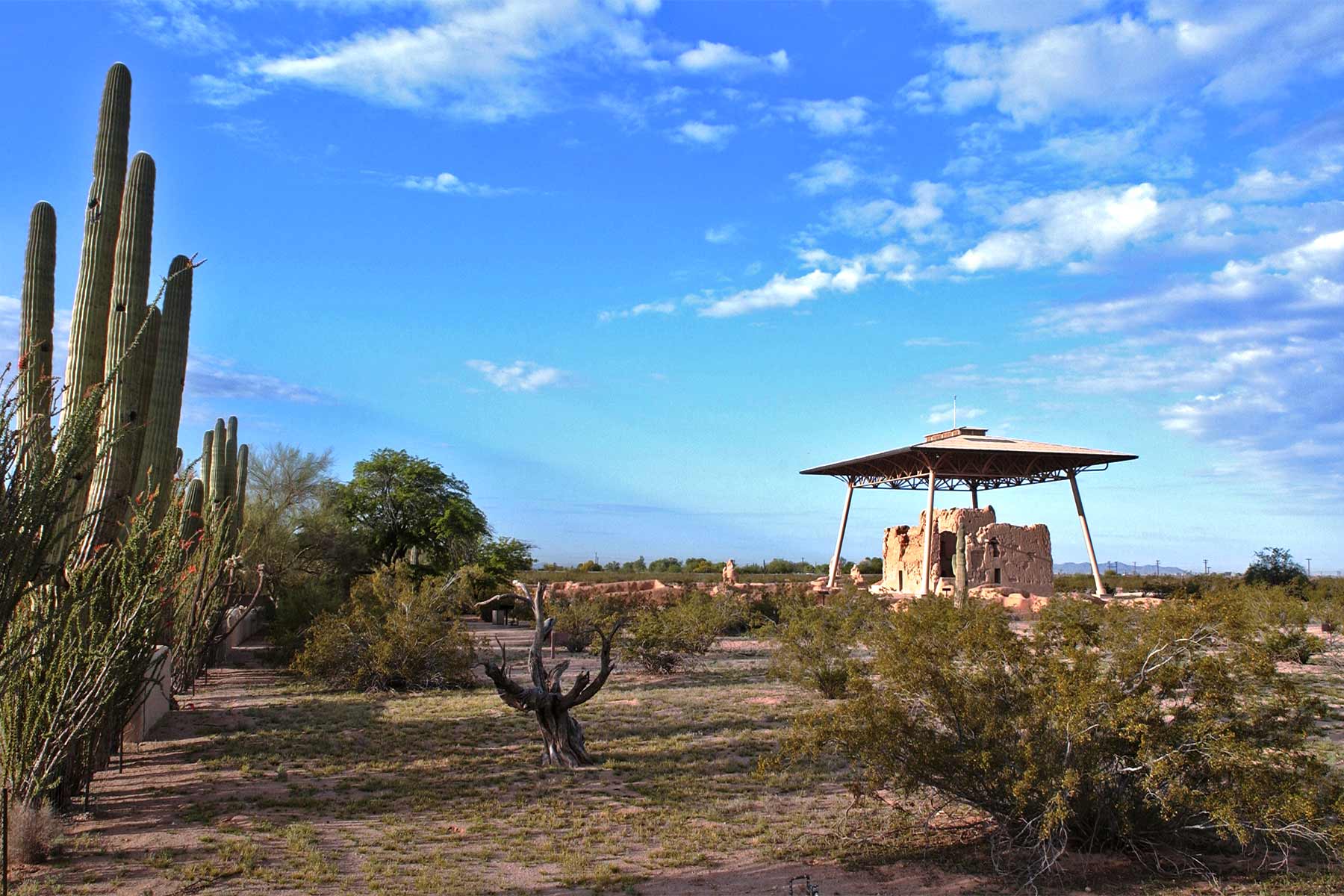
In 1891, the ruins were first protected by the federal government when President Benjamin Harrison set aside the site as a reservation for the use of the “civilized tribes”. However, it wasn’t until the early 20th century that the site received national recognition, when President Woodrow Wilson signed legislation creating Casa Grande Ruins National Monument in 1918.
Since then, the monument has been preserved and maintained by the National Park Service, and it is now one of the most popular tourist destinations in Arizona. Visitors can tour the Casa Grande, as well as several other Hohokam structures and exhibits, and learn about the history and culture of the Hohokam people.
Casa Grande Ruins National Monument is an important piece of American history, preserving the legacy of the Hohokam people and offering a unique glimpse into the lives of one of the Southwest’s ancient civilizations.
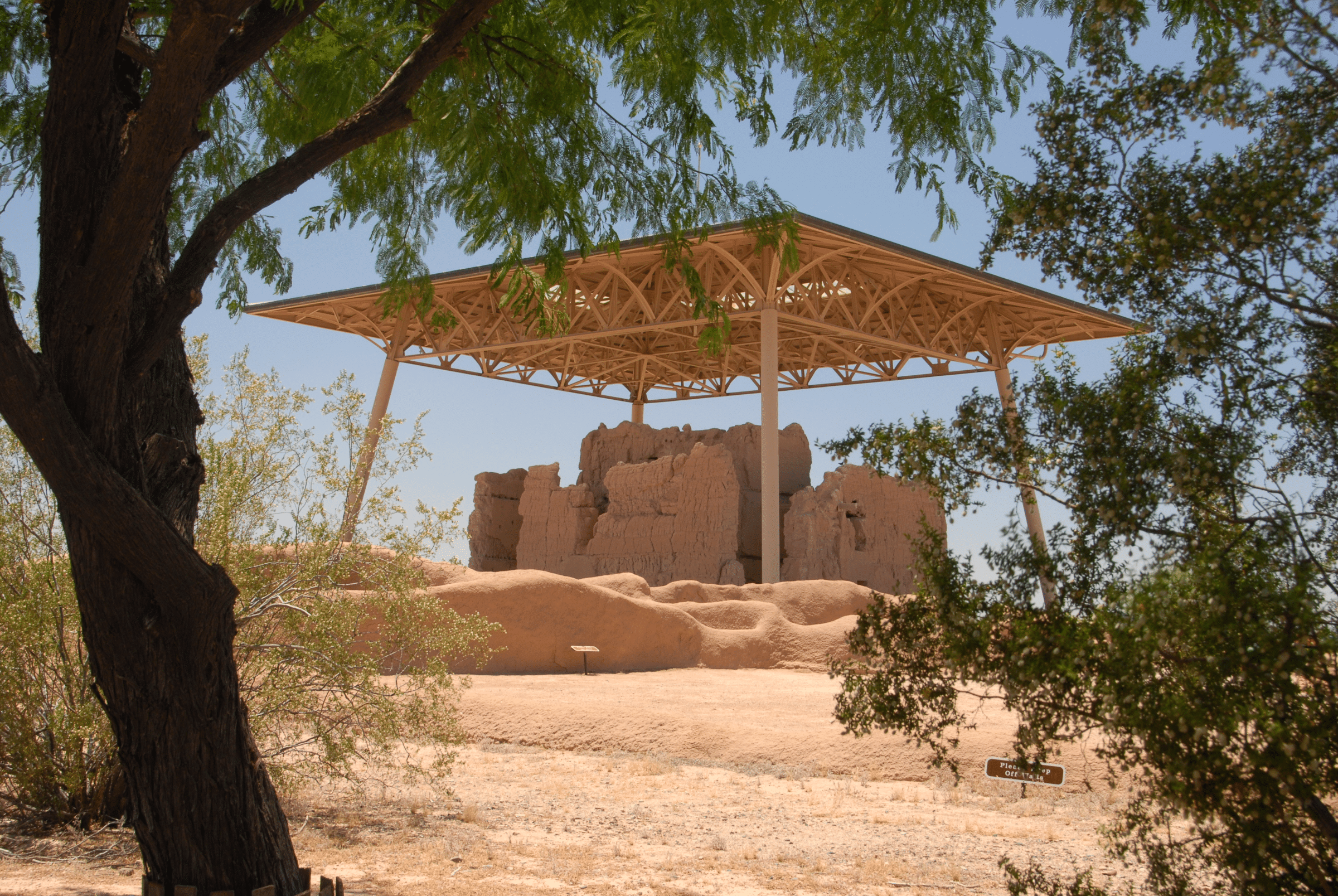
RELATED: These 24 Arizona National Parks Are Breathtakingly Beautiful
2. Coronado National Memorial
Distance From Phoenix: 3 hours 11 minutes (206 miles) via I-10 E.
Coronado National Memorial was established to commemorate the 1540 expedition of Spanish conquistador Francisco Vásquez de Coronado, who explored the southwestern United States in search of the mythical Seven Cities of Gold.
During his expedition, Coronado and his men encountered various Native American tribes, including the Zuni and Hopi, and explored a large part of what is now the southwestern United States, including parts of Arizona, New Mexico, Texas, Oklahoma, and Kansas. Although the Seven Cities of Gold were never found, the expedition marked the first European exploration of the American Southwest and helped lay the foundation for Spanish colonization in the region.
Established To Commemorate The Expedition & Preserve The History Of the Southwest
In 1952, Coronado National Memorial was established to commemorate the expedition and to preserve the history of the Southwest and its cultural heritage. The memorial includes a visitor center with exhibits on the history of Coronado and his expedition, as well as the native peoples and cultures of the Southwest. The memorial also features a scenic drive that provides views of the surrounding landscape and a picnic area.
In addition to its historical and cultural resources, Coronado National Memorial is also known for its scenic beauty, with panoramic views of the surrounding mountains and the nearby San Bernardino Valley.
Visitors can also enjoy hiking and wildlife watching, as well as ranger-led programs and special events throughout the year. The memorial is a popular destination for history buffs, outdoor enthusiasts, and families, and offers a unique glimpse into the history of the American Southwest.
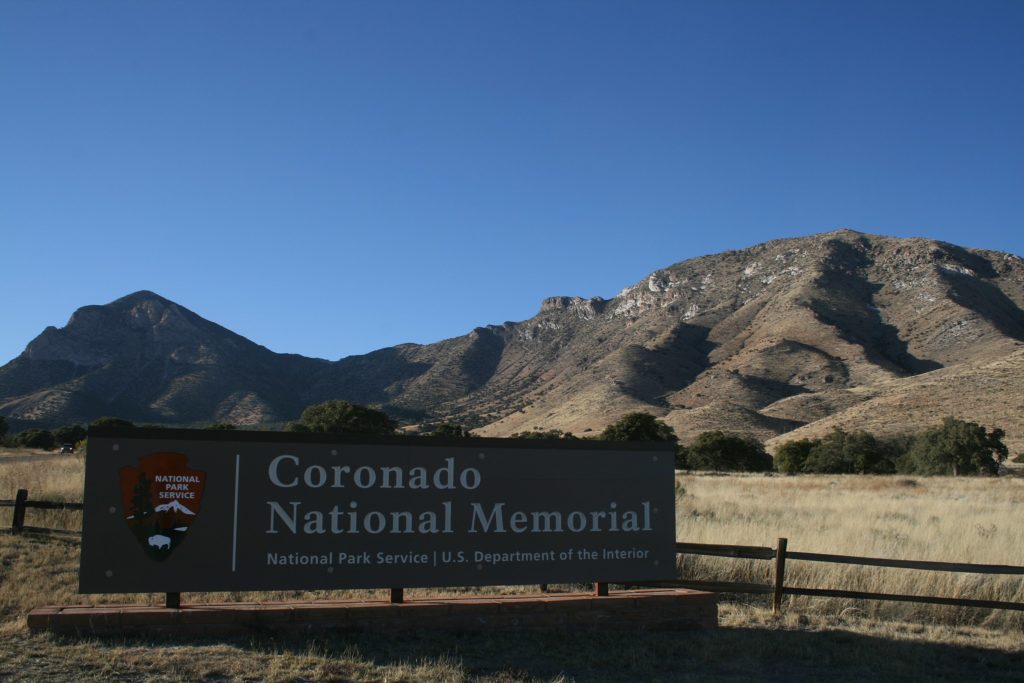
RELATED: 18 Surprising New Mexico National Parks
3. Fort Bowie National Historic Site
Distance From Phoenix: 3 hours 30 minutes (232 miles) via I-10 E.
Fort Bowie National Historic Site is a former military fort located in southeastern Arizona, near the town of Willcox. The fort was established in 1862 as a response to the Apache Wars, and it played a significant role in the conflict between the US military and the Apache people.
The history of Fort Bowie can be traced back to the mid-19th century, when the U.S. government began to expand into the southwestern territories and encountered resistance from the Apache people.
The fort was established as a military post to help protect settlers and secure the territory, and it became an important center of military operations in the region.
Battle Of Apache Pass
During its years of operation, Fort Bowie was the site of several important events, including the Bascom Affair, a confrontation between the US military and the Apache leader Cochise, and the Battle of Apache Pass, a significant military engagement in the Apache Wars.
The fort was also the site of a number of skirmishes and battles between the US military and the Apache people, and it played a crucial role in the eventual subjugation of the Apache people and the end of the Apache Wars.
Today, Fort Bowie National Historic Site preserves the history of the fort and the Apache Wars, offering visitors the opportunity to learn about this important chapter in American history.
The site features several hiking trails, including the one-mile Bowie Trail, which leads to the ruins of the fort, and several interpretive exhibits, which provide insight into the history of the fort and the Apache Wars.
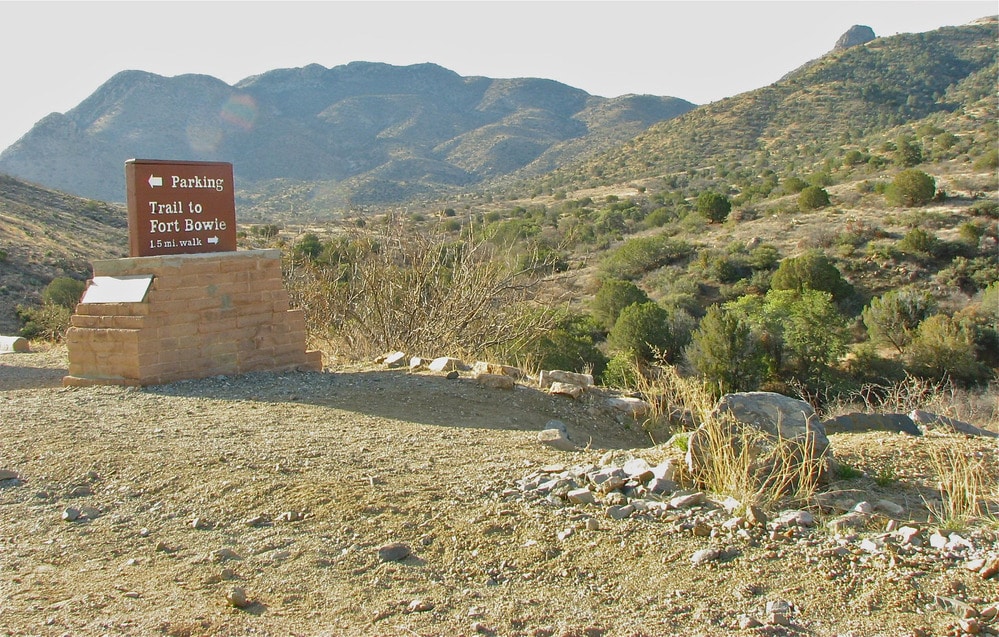
4. Glen Canyon National Recreation Area
Distance From Phoenix: 4 hours (267 miles) via I-17 N & US-89 N.
Glen Canyon National Recreation Area encompasses over 1.2 million acres of canyons, plateaus, and red rock formations that surround the Glen Canyon Dam and Lake Powell, a massive man-made lake that spans across the Arizona-Utah border.
The recreation area offers visitors a variety of recreational activities, including boating, fishing, hiking, and camping. Visitors can explore the picturesque canyons and scenic trails, including Horseshoe Bend, one of the most photographed locations in the area. There are also several developed campgrounds and marinas that provide access to Lake Powell and the surrounding area.
In addition to its recreational offerings, Glen Canyon National Recreation Area is also known for its rich cultural history. Ancient Puebloan ruins, rock art, and other artifacts can be found throughout the area, providing a glimpse into the lives of the indigenous peoples who once lived in the region.
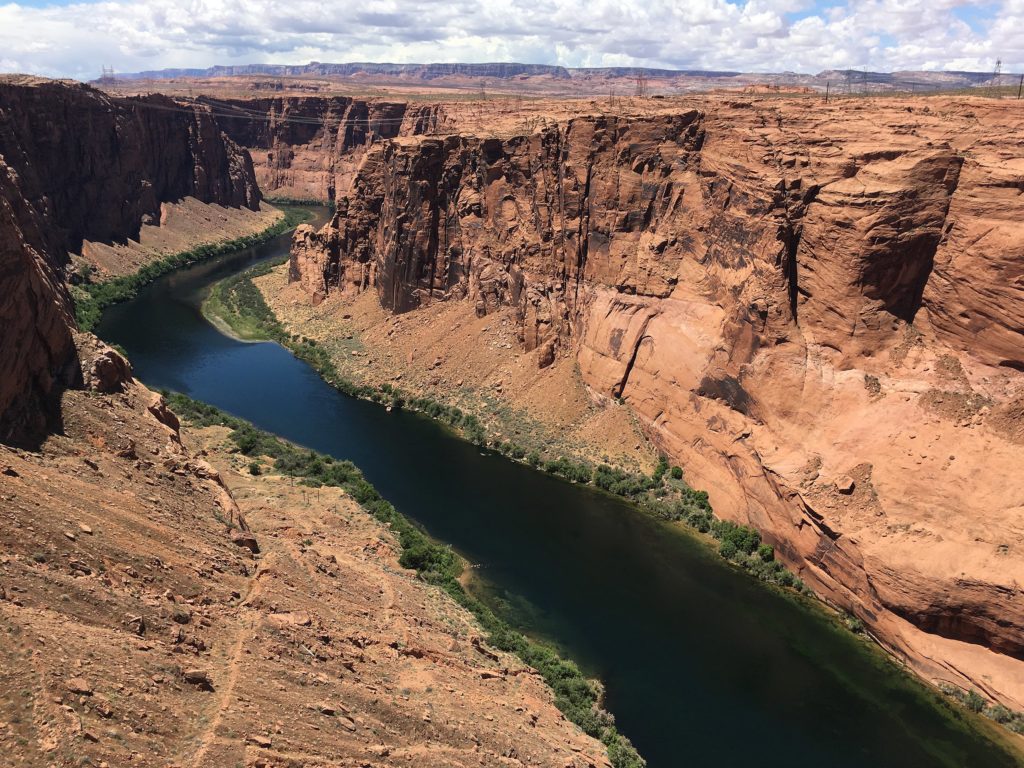
Things To Do At Glen Canyon
The Glen Canyon National Recreation Area offers a variety of outdoor activities, including:
- Boating and fishing: The lake offers opportunities for boating, fishing, and kayaking.
- Hiking: The park has trails for hiking and exploring the canyons and mesas.
- Scenic Drives: Take a drive along the scenic roads to take in the views of the red rock formations and the lake.
- Camping: There are several campgrounds available for those who want to spend a night or two under the stars.
- Rock Climbing: The park offers opportunities for rock climbing and rappelling for experienced climbers.
- Photography: With its stunning landscapes and vistas, Glen Canyon is a popular spot for photography enthusiasts.
- Ranger-Led Programs: Join ranger-led programs to learn about the park’s history, geology, and wildlife.
- Houseboat Rentals: Houseboat rentals are available for visitors who want to spend a few days on the lake.

5. Grand Canyon National Park
Distance From Phoenix: 3 hours 30 minutes (224 miles) via I-17 N.
Arizona’s Grand Canyon National Park has a special significance for the founders of More Than Just Parks.
“We founded More Than Just Parks after a spur of the moment road trip with friends to the Grand Canyon during which we discovered the National Parks for the first time.” –More Than Just Parks Co-Founder Will Pattiz
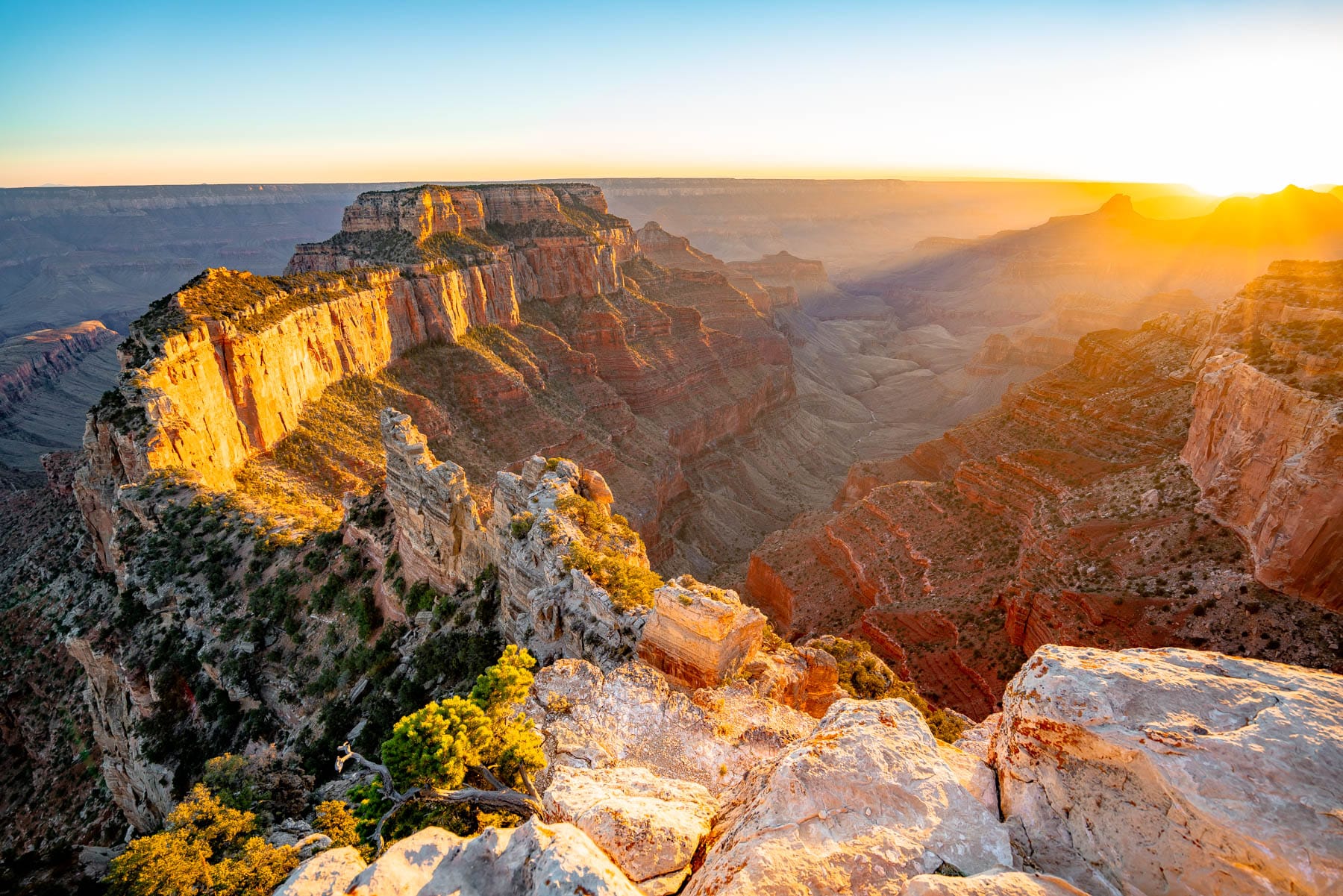
History Of The Grand Canyon
The Grand Canyon National Park is a natural wonder located in northern Arizona, and is widely considered to be one of the most stunning landscapes on earth. The history of the Grand Canyon National Park dates back thousands of years, to a time when indigenous peoples lived and thrived in the region.
The first recorded European encounter with the Grand Canyon was by Spanish conquistador García López de Cárdenas in 1540, but it was not until the late 19th century that the canyon began to draw widespread attention from explorers, scientists, and tourists. The Grand Canyon became a National Monument in 1908, and was officially designated as a National Park in 1919.
Throughout the 20th century, the Grand Canyon National Park was a popular destination for tourists and outdoor enthusiasts, who came to experience the stunning vistas and unique geological formations of the canyon.
In the mid-20th century, concerns about the impact of tourism on the park led to the creation of new policies and programs aimed at preserving the natural resources of the park and managing its use.
CHECK OUT: 16+ FASCINATING Grand Canyon Facts
The Powell Expedition & The Grand Canyon
I don’t know why Hollywood hasn’t made a film about this expedition. It’s Lewis & Clark Meets Indiana Jones! In 1869, John Wesley Powell, a one-armed Civil War veteran and self-trained naturalist, embarks on a daring descent of the mighty Colorado River.
Powell was be accompanied by 11 men in four wooden boats. He led the expedition through the Grand Canyon and over punishing rapids that many would hesitate to run today with modern rafts.
As for danger, three of Powell’s men were convinced that the rapids were impassable. Seneca Howland, O.G. Howland, and William H. Dunn decided to take their chances crossing the harsh desert lands above the canyon rims.
These three began the long climb up out of the Grand Canyon. It was not a good decision on their part.
The three men allegedly encountered a war party of Shivwit Indians and were killed.
As for Powell and the men who stayed the course, they lived to tell the tale and provide valuable information on the Grand Canyon and Colorado River.
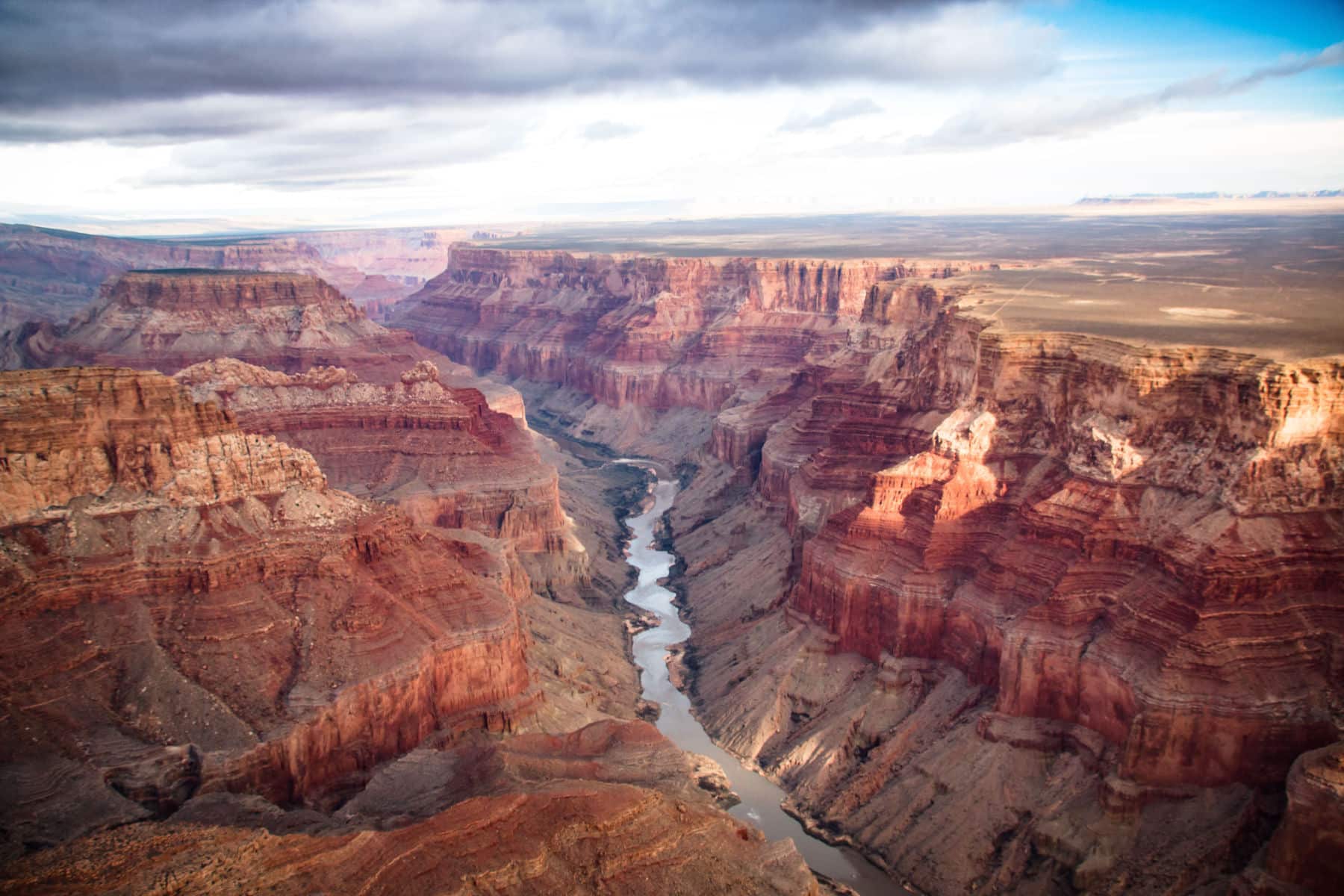
Take A Deeper Dive With A Story That’s Worthy Of Indiana Jones: The Exploration of the Colorado River and Its Canyons by John Wesley Powell.
The Grand Canyon Today
Today, the Grand Canyon National Park is one of the most popular tourist destinations in the United States, attracting millions of visitors each year.
The park offers a wide range of recreational opportunities, including hiking, camping, rafting, and wildlife watching, and is also home to several important scientific and cultural sites, including archaeological ruins and historic landmarks.
The Grand Canyon National Park is widely recognized as one of the great natural wonders of the world, and its history and beauty continue to inspire and awe visitors from around the globe.
Whether you’re a seasoned adventurer or simply looking to experience the natural beauty of the American West, a visit to the Grand Canyon National Park is a truly unforgettable experience.
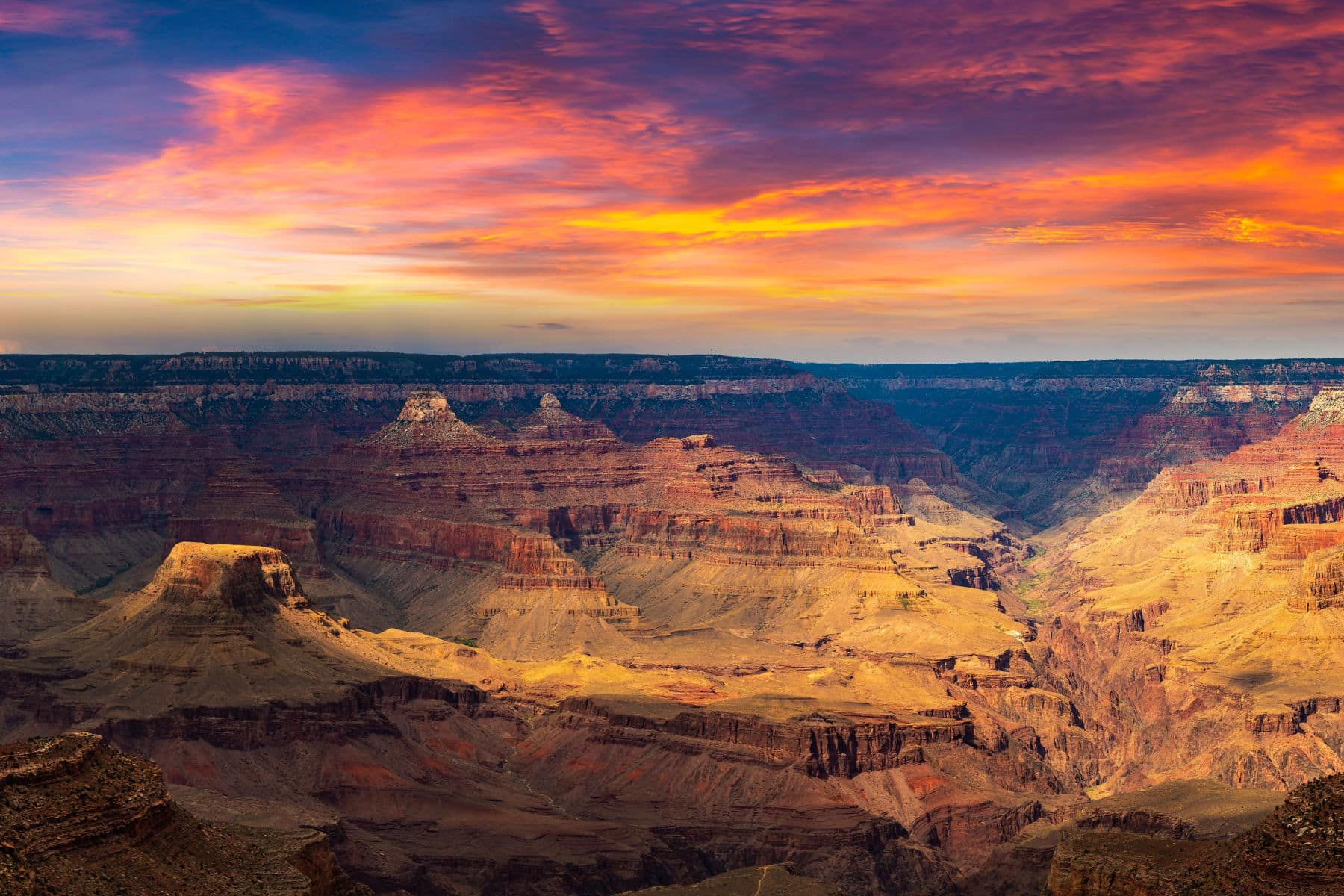
Things To See & Do
The Grand Canyon National Park is a vast and diverse natural area, offering a wide range of activities and attractions for visitors of all ages and interests.
Here are some of the most popular things to do at the Grand Canyon National Park:
- Scenic drives: The park offers several scenic drives, including the South Rim Drive, which provides panoramic views of the canyon, and the Desert View Drive, which offers views of the surrounding deserts and forests.
- Hiking: The park offers numerous hiking trails, ranging from short, easy walks to challenging backcountry treks, allowing visitors to explore the diverse landscapes and geological formations of the canyon.
- Rafting: The Colorado River, which runs through the Grand Canyon, is a popular destination for rafting and kayaking, providing opportunities for adventure and exploration on one of the most iconic rivers in the world.
- Wildlife watching: The park is home to a diverse range of wildlife, including bighorn sheep, elk, and several species of birds, making it a popular destination for wildlife watching and birding.
- Photography: The Grand Canyon provides numerous opportunities for stunning photography, and visitors are encouraged to capture the beauty and majesty of the canyon in their own way.
- Cultural history: The park is rich in cultural history, with evidence of human habitation in the region dating back thousands of years. Visitors can explore several archaeological sites, including the Tusayan Ruins, and learn about the indigenous peoples who once lived in the area.
- Stargazing: The Grand Canyon National Park is a designated International Dark Sky Park, offering exceptional opportunities for stargazing and astronomical observation.
- Guided tours: The park offers a variety of ranger-led tours, including walks, talks, and scenic drives, allowing visitors to learn about the history, geology, and wildlife of the canyon.
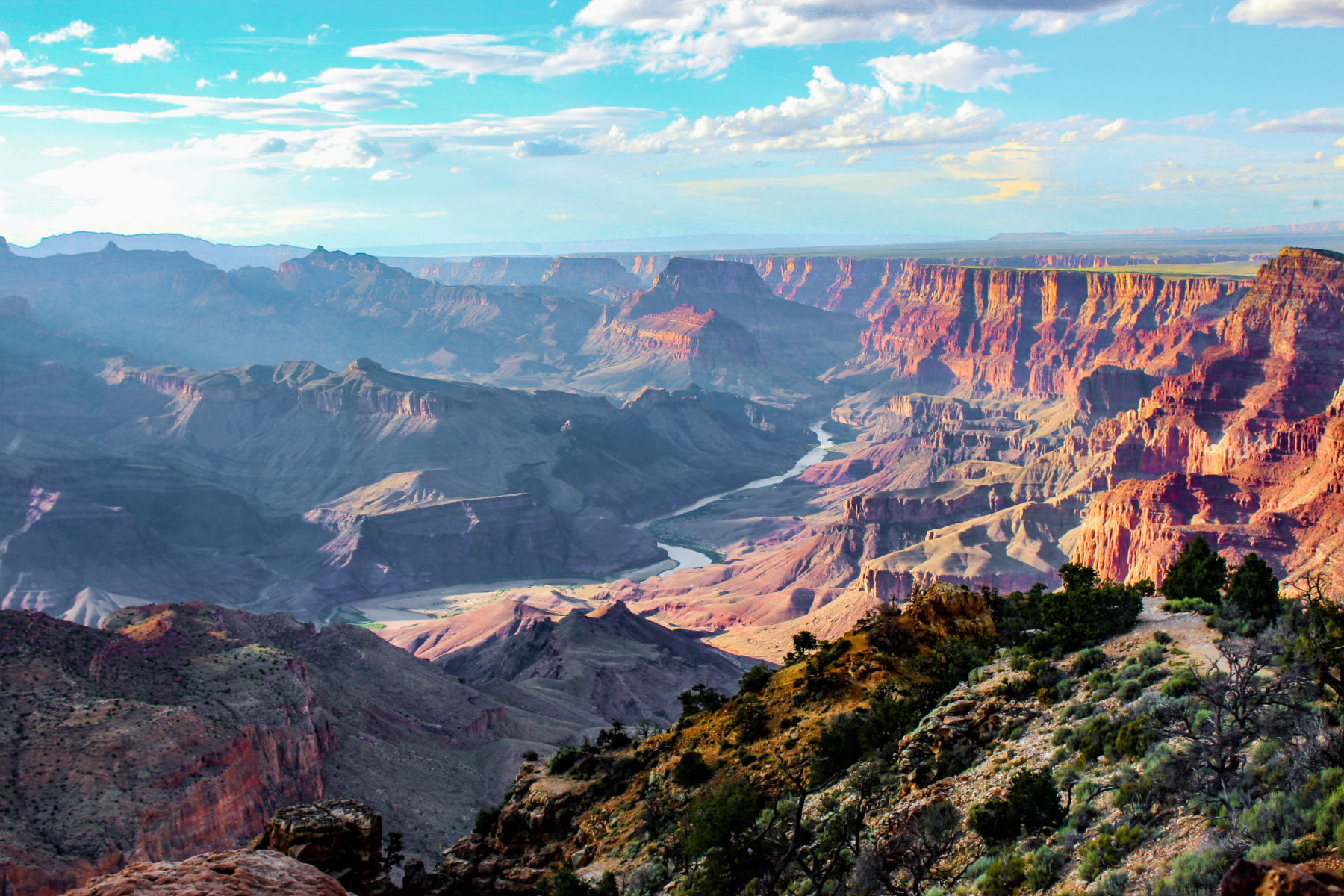
Top 10 National Parks Near Phoenix
6. Lake Mead National Recreation Area
Distance From Phoenix: 3 hours 30 minutes (234 miles) via US-93 N.
Visitors to Lake Mead National Recreation Area can enjoy a variety of water recreation activities including: biking, boating, canoeing, camping, fishing, hiking, horseback riding, hunting, kayaking, scenic driving and even scuba diving.
Bicyclists are welcome at Lake Mead on park roads and on routes designated for bicycle use. There are also approved backcountry roads which are designated routes and are marked with a yellow arrow sign with a number on it.
Worried that there won’t be a place to launch your boat? Don’t be! If you’re planning on boating then Hemenway Harbor, PWC Beach, Boulder Harbor, Callville Bay, Echo Bay, Temple Bar, South Cove, Willow Beach, Cottonwood Cove, Katherine Landing, North Arizona Telephone Cove, Cabinsite Cove and Princess Cove all offer safe places to launch your boat.
And, if you’re looking to spend the night, there are over 900 camping and RV sites at 15 different locations. Too many to list here, but don’t worry as I’m confident there’s a site for you. Be sure to check ahead before you depart and make your arrangements so you won’t have any unpleasant surprises.
RELATED: 14 MIGHTY UTAH NATIONAL PARKS & MONUMENTS
7. Montezuma Castle National Monument
Distance From Phoenix: 1 hour 30 minutes (93 miles) via I-17 N.
I am fascinated by the cultures which predated the arrival of the Europeans. Montezuma Castle was established in 1906 as the third National Monument dedicated to preserving Native American culture. These were the folks who came along long before Columbus and the Gang.
Visitors to the site can examine a collection of amazing artifacts including basketry, hunting, jewelry, pottery and tools. There’s even a Southwest Virtual Museum where you can check out these amazing collections online.
Montezuma Castle National Monument encompasses 826 acres and lies in the Verde Valley at the junction of the Colorado Plateau and Basin and Range physiographic provinces. Visitors are encouraged to check out the surroundings including the plant and animal life.
While you’re there, check out the Montezuma Well which has been home to many prehistoric groups of people since as early as 11,000 CE. Visitors can still see the irrigation canal, picnic areas, and historic Back ranch house at Montezuma Well.
RELATED: 10 EPIC WYOMING NATIONAL PARKS WORTH VISITING
8. Old Spanish National Historic Trail
Distance From Phoenix: 7 hours 40 minutes (482 miles) via I-17 N, US-160 E and US-191 N.
This one is quite a drive, but it’s definitely worth it if you don’t mind spending some quality time with your car (and the people in it of course).
The Old Spanish Trail, “the longest, crookedest, most arduous pack mule trail in the history of America,” (1829-1848) was best-known during the Mexican period of southwestern history. The trail started in Santa Fe and terminated in Los Angeles, and had several variants – the Armijo Route, the Main Branch, and the mountainous North Branch with East and West Forks.
For almost 200 years, a primary concern for Spanish authorities was finding a supply link between the provincial capitals of northern New Spain and the Pacific Ocean. El Camino Real (the Royal Road) existed — Santa Fe to Chihuahua, and on to Mexico City, but the round trip took many months.
Early in the 19th century when independence from Spain was achieved, Mexico began to allow in trade goods from the United States over what came to be called the Santa Fe Trail, which opened in 1821 from Missouri to New Mexico. But the need continued for a connection with California and the Pacific Ocean. (Source: Arizona State Parks & Trails)
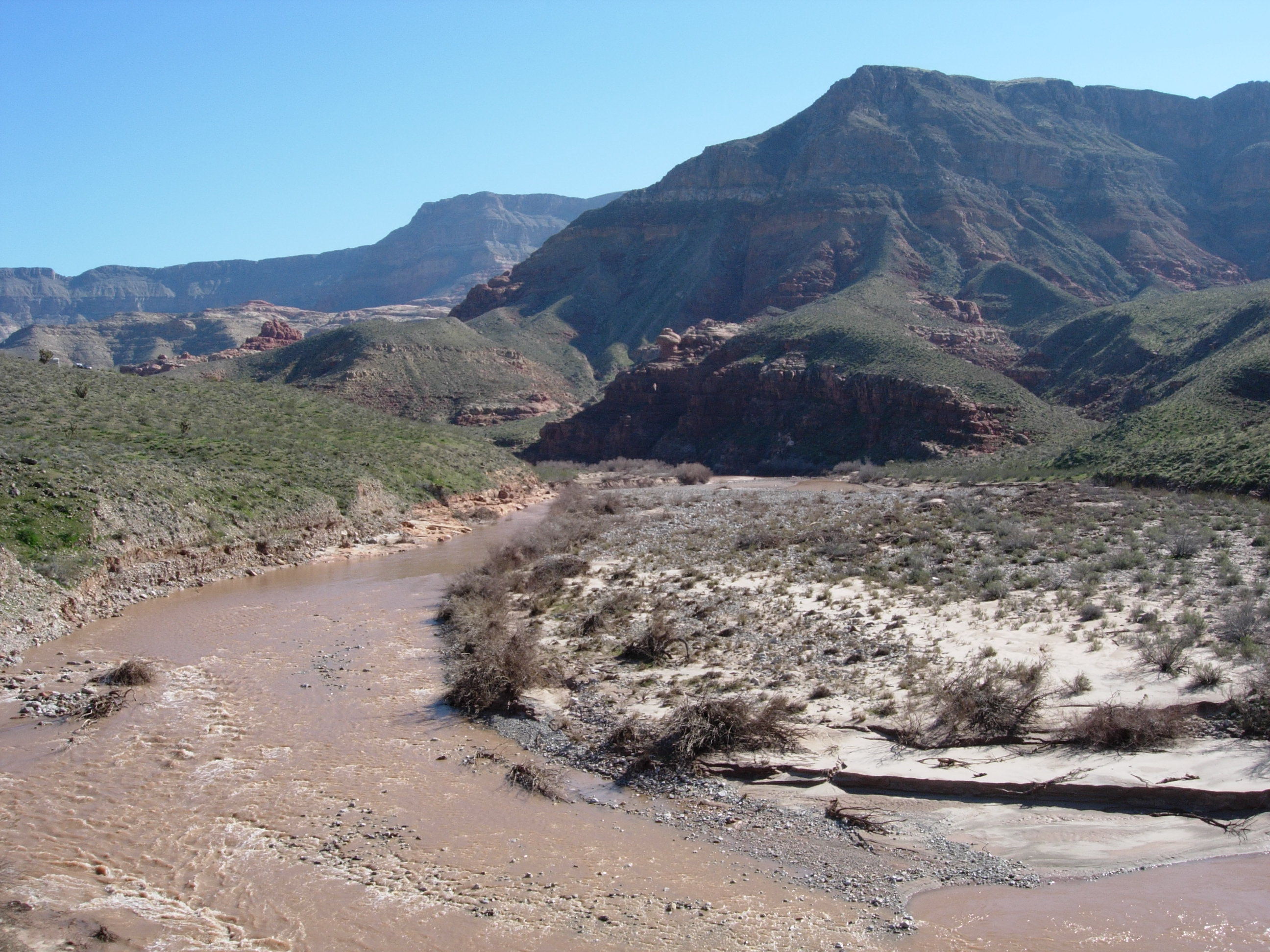
9. Petrified Forest National Park
Distance From Phoenix: 3 hours 18 minutes (203 miles) via AZ-87 N & AZ-260 E.
Imagine a forest of petrified wood. It’s like something from another world and you have the opportunity to experience it firsthand.
Petrified Forest National Park is a unique and fascinating natural area that’s named for its vast deposits of petrified wood, which are among the largest and most colorful in the world.
The petrified wood is the result of fallen trees from over 225 million years ago, during the Late Triassic period, that have been preserved in place through the process of permineralization.
The park covers over 93,000 acres and is home to a diverse range of landscapes, including colorful badlands, towering mesas, and rolling prairies. In addition to the petrified wood, the park is also home to many other geologic and paleontological features, such as dinosaur fossils, ancient volcanic formations, and rock art created by early indigenous peoples.
Visitors to Petrified Forest National Park can hike the park’s many trails, take a scenic drive through the park, or visit one of the park’s many museums and visitor centers to learn more about the area’s geology, paleontology, and cultural history. There are also several campgrounds and picnic areas available for visitors who want to spend more time in the park.
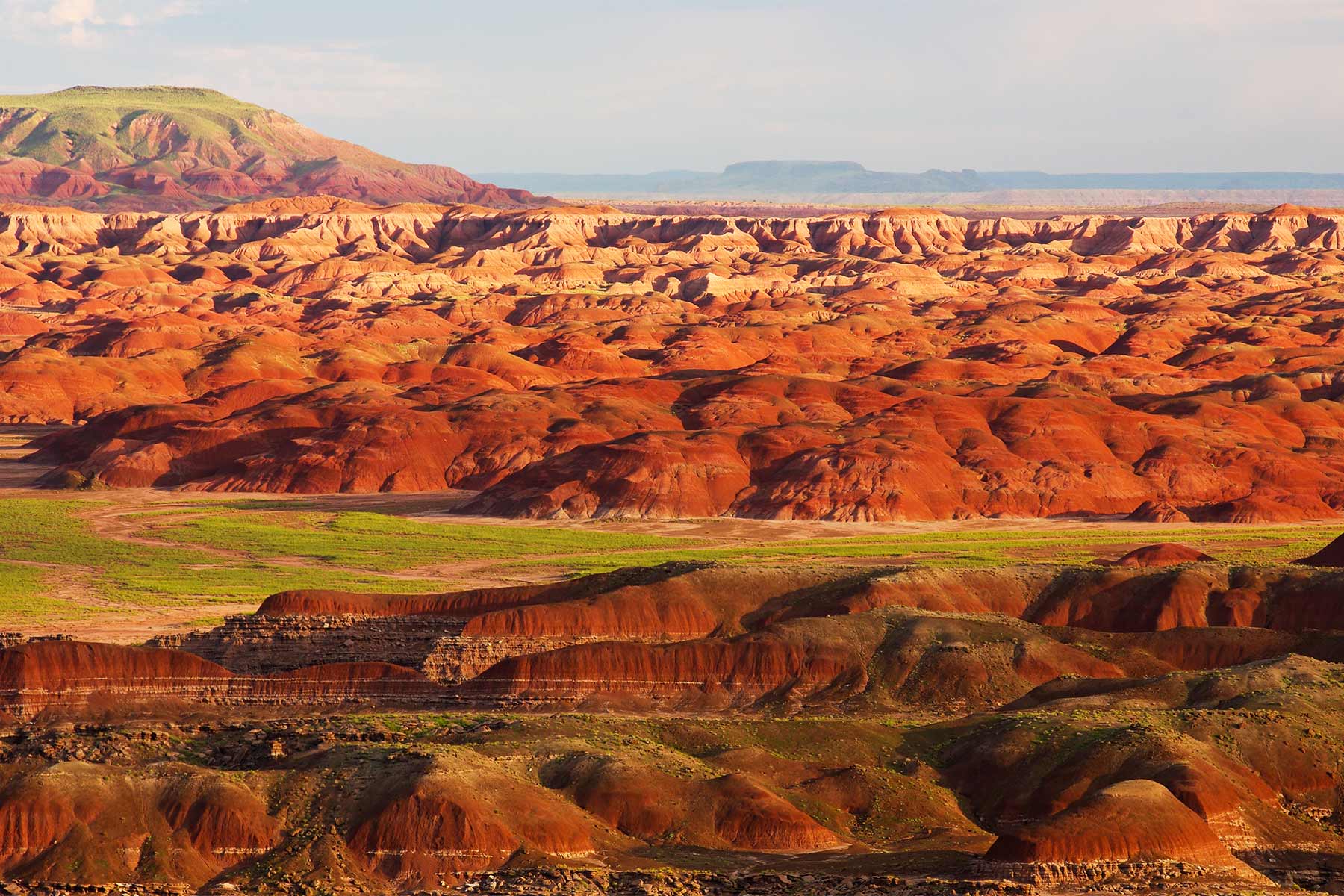
10. Saguaro National Park
Distance From Phoenix: 1 hour 34 minutes (105 miles) via I-10 E.
Saguaro National Park is named after the giant saguaro cactus, which is native to the region and is the park’s most recognizable symbol.
The park covers over 92,000 acres and is divided into two districts, the Tucson Mountain District to the west and the Rincon Mountain District to the east, each offering its own unique landscape and attractions.
The park’s landscape features a diverse array of habitats, including deserts, mountains, and riparian areas, and is home to a wide variety of plant and animal species. In addition to the giant saguaro cactus, the park is also home to several other species of cactus, as well as several species of wildlife, including rattlesnakes, lizards, and a variety of bird species.
Visitors to Saguaro National Park can enjoy a range of activities, including hiking, picnicking, wildlife watching, and scenic drives. The park features several well-marked hiking trails, ranging from easy nature walks to challenging backcountry hikes, that offer opportunities to explore the park’s diverse landscapes and view its abundant wildlife.
The park is also home to several historic sites, including the remains of homesteads, mines, and ranches, that offer a glimpse into the region’s human history.
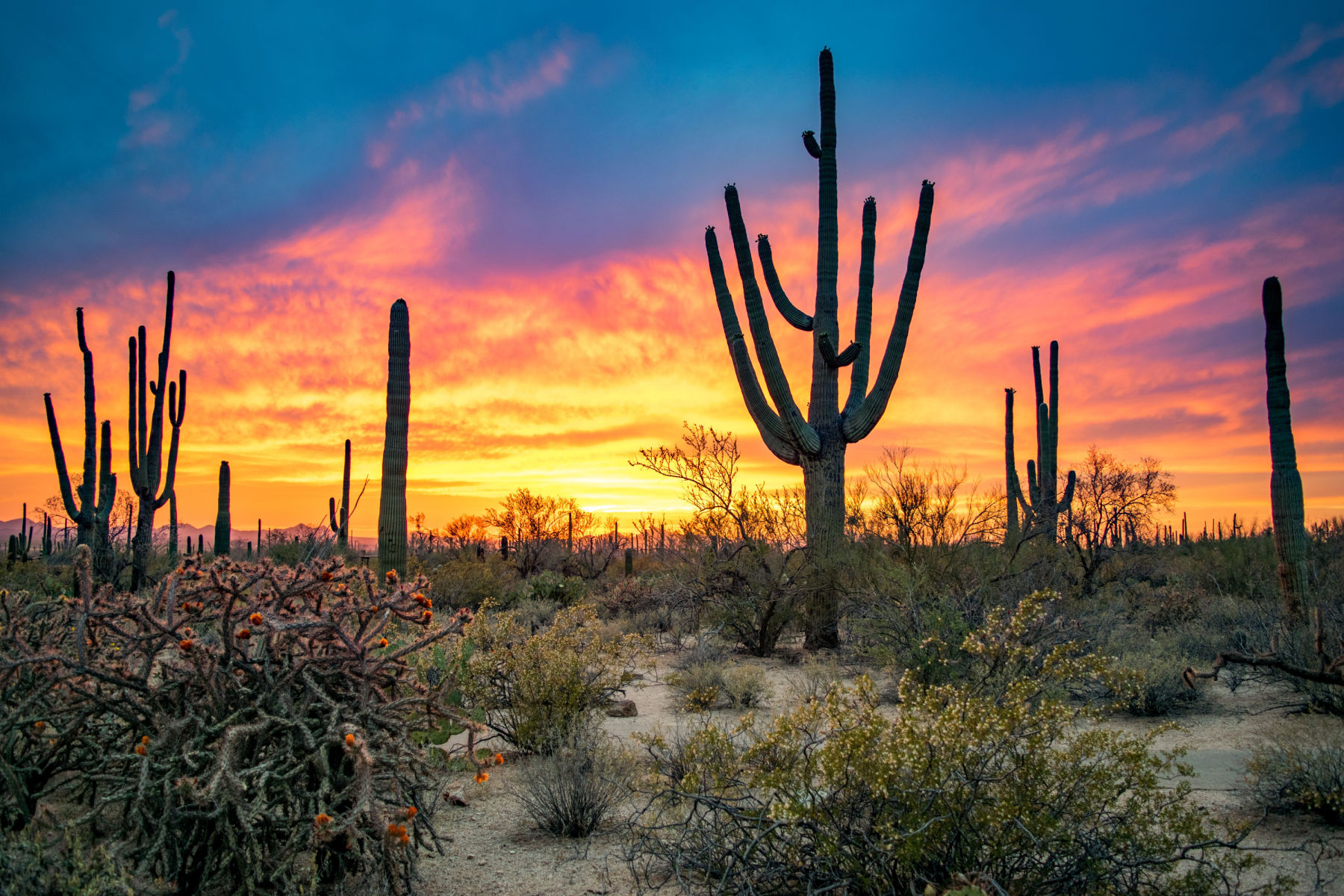
Check Out Our Saguaro National Park Film
SAGUARO is the culmination of weeks spent filming in one of the most unique and vibrant deserts in the world, the Sonoran Desert. Encompassing over 90,000 acres, Saguaro National Park preserves vast forests of the iconic saguaro cactus, rare wildlife, and majestic landscapes.
RELATED: THE ULTIMATE ARIZONA ROAD TRIP
National Parks Near Phoenix FAQ
Saguaro National Park is probably one of the less well known National Parks of America, but given its proximity to Tucson it’s well worth visiting if you happen to be in the area. It’s a beautiful place to spend time, especially at sunset where you’ll get silhouettes of the cacti all over the desert.
The Grand Canyon is Arizona’s most beautiful national park. Famed around the world for its size, scale, and splendor, the Grand Canyon boasts some of the most spectacular scenery on Earth
Why Trust Us About National Parks Near Phoenix?
We’re Jim Pattiz and Will Pattiz, collectively known as the Pattiz Brothers (and sometimes the Parks Brothers) and we absolutely LOVE the national parks.
You should probably know that we don’t just make this stuff up out of thin air. We’ve spent our entire adult lives exploring and filming America’s national parks and public lands.
We’ve worked with the National Park Service, the Department of Interior, USDA, and the U.S. Forest Service for years creating films on important places and issues. Our work has been featured in leading publications all over the world and even some people outside of our immediate family call us experts on the national parks.

Meet The Parks Brothers
Map Of National Parks Near Phoenix
List Of National Parks Near Phoenix
- Casa Grande Ruins National Monument
- Coronado National Memorial
- Fort Bowie National Historic Site
- Glen Canyon National Recreation Area
- Grand Canyon National Park
- Lake Mead National Recreation Area
- Montezuma Castle National Monument
- Old Spanish National Historic Trail
- Petrified Forest National Park
- Saguaro National Park
We Hope You’ll Follow Our Journey
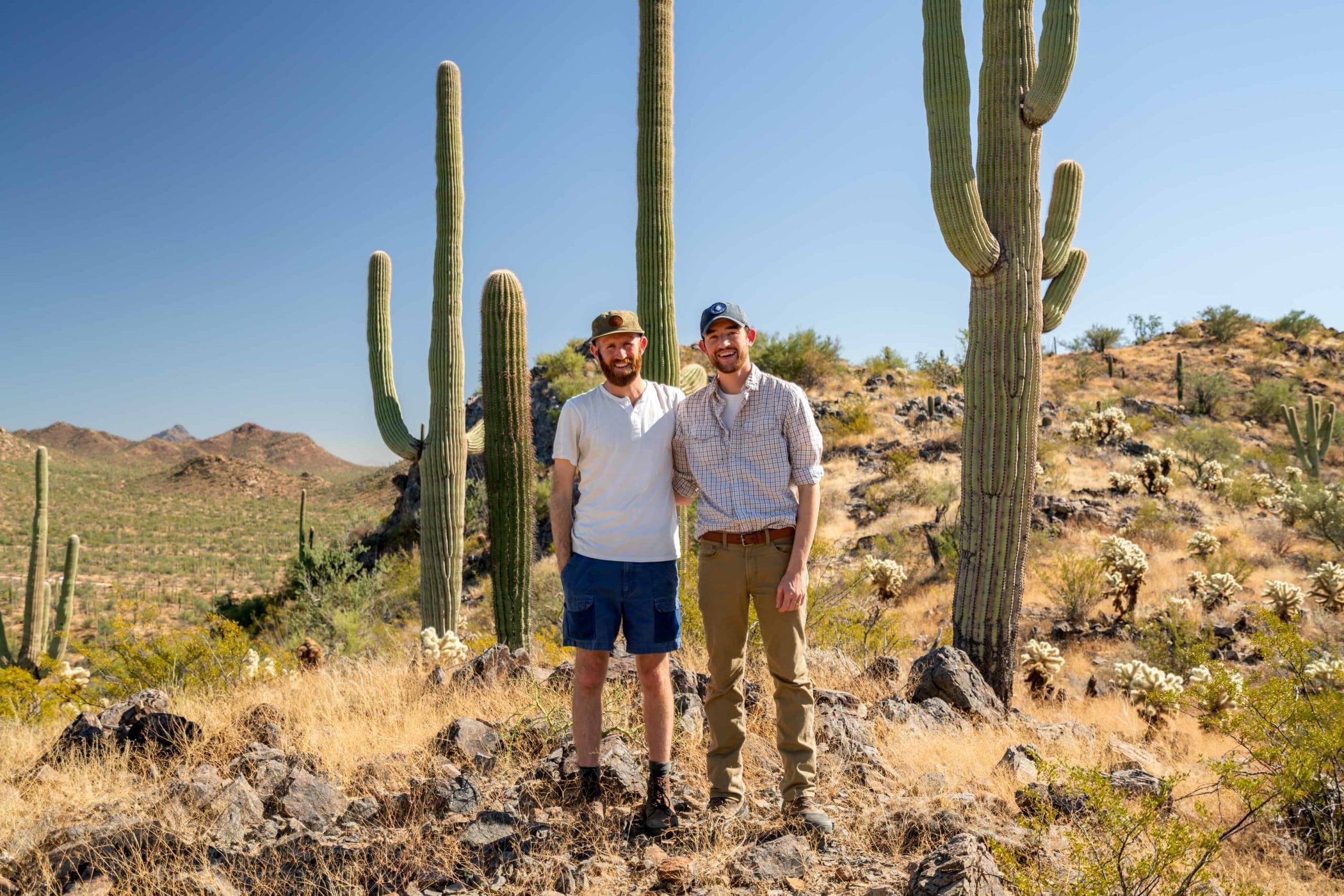
Our goal here at More Than Just Parks is to share the beauty of America’s national parks and public lands through stunning short films in an effort to get Americans and the world to see the true value in land conservation.
We hope you’ll follow our journey through the parks and help us to keep them the incredible places that they are. If you’re interested in joining the adventure then please sign up below!
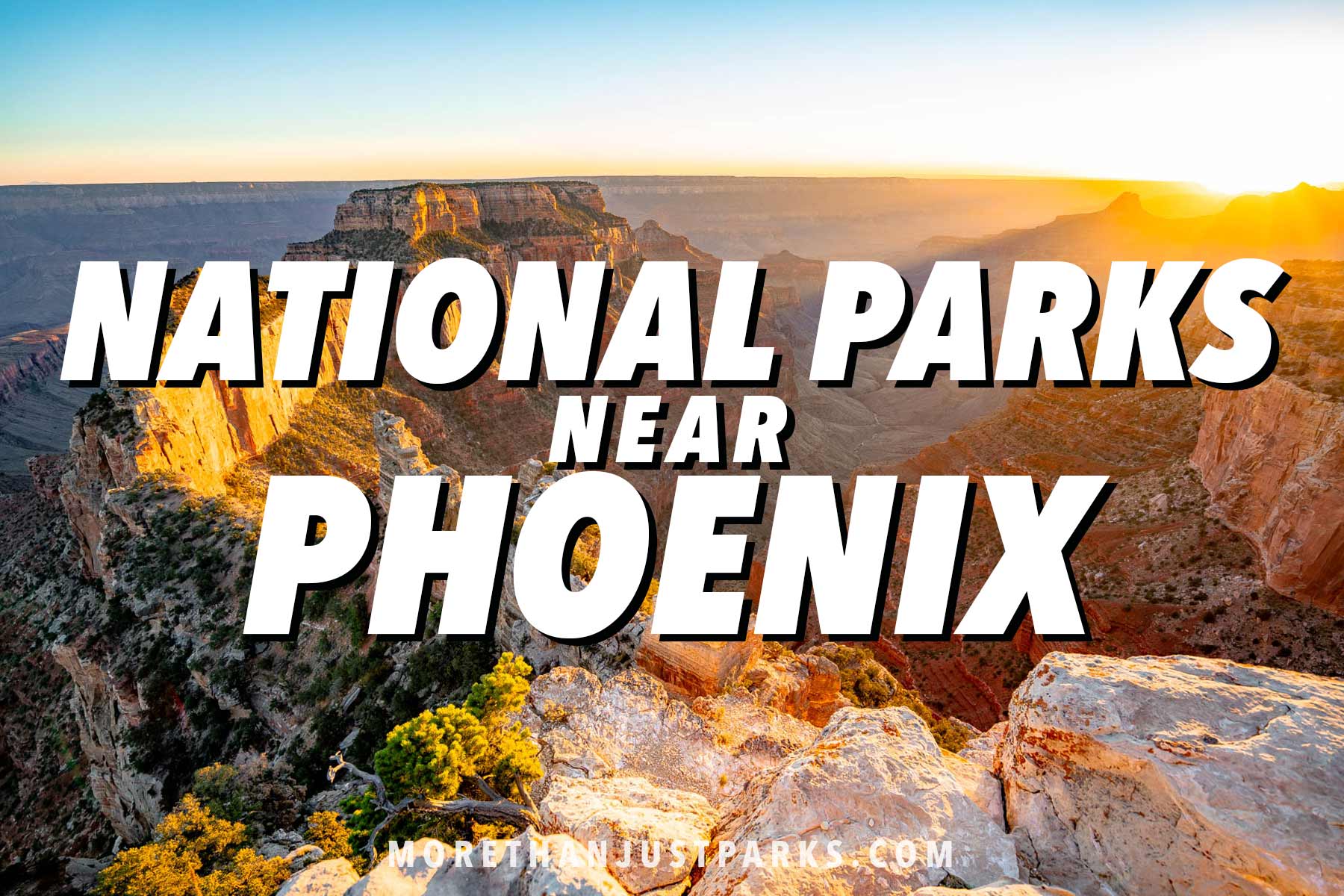
national parks near phoenix, phoenix national parks, national parks of phoenix, national parks in phoenix, national parks near phoenix, phoenix national parks, national parks of phoenix, national parks in phoenix, national parks near phoenix, phoenix national parks, national parks of phoenix, national parks in phoenix, national parks near phoenix, phoenix national parks, national parks of phoenix, national parks in phoenix, national parks near phoenix, phoenix national parks, national parks of phoenix, national parks in phoenix,
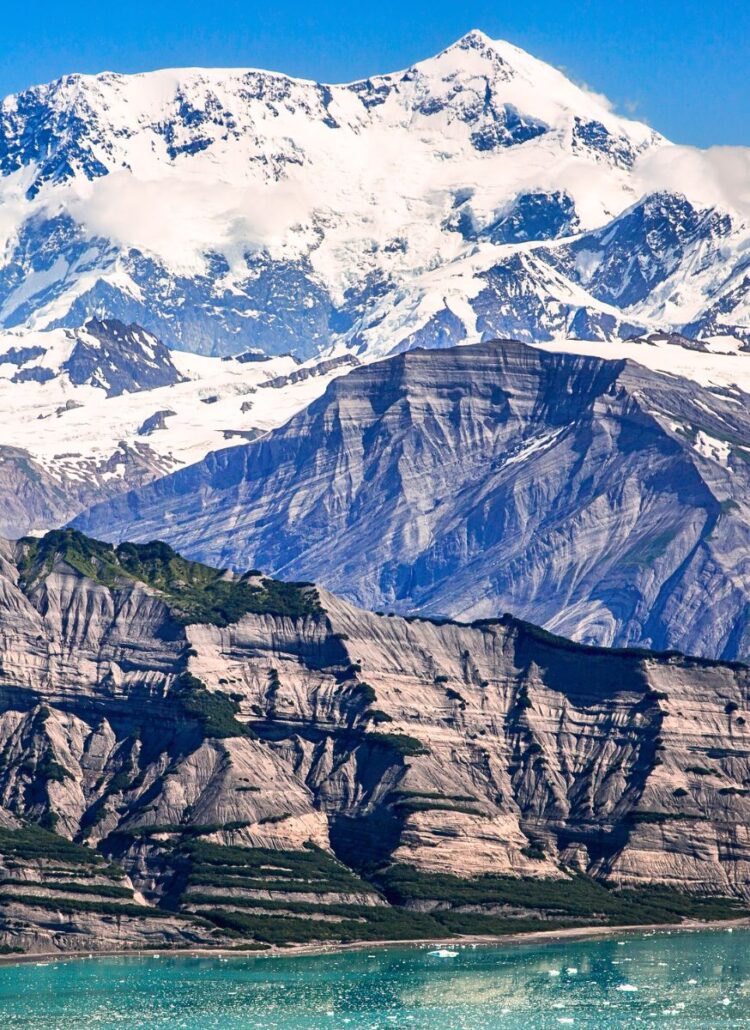
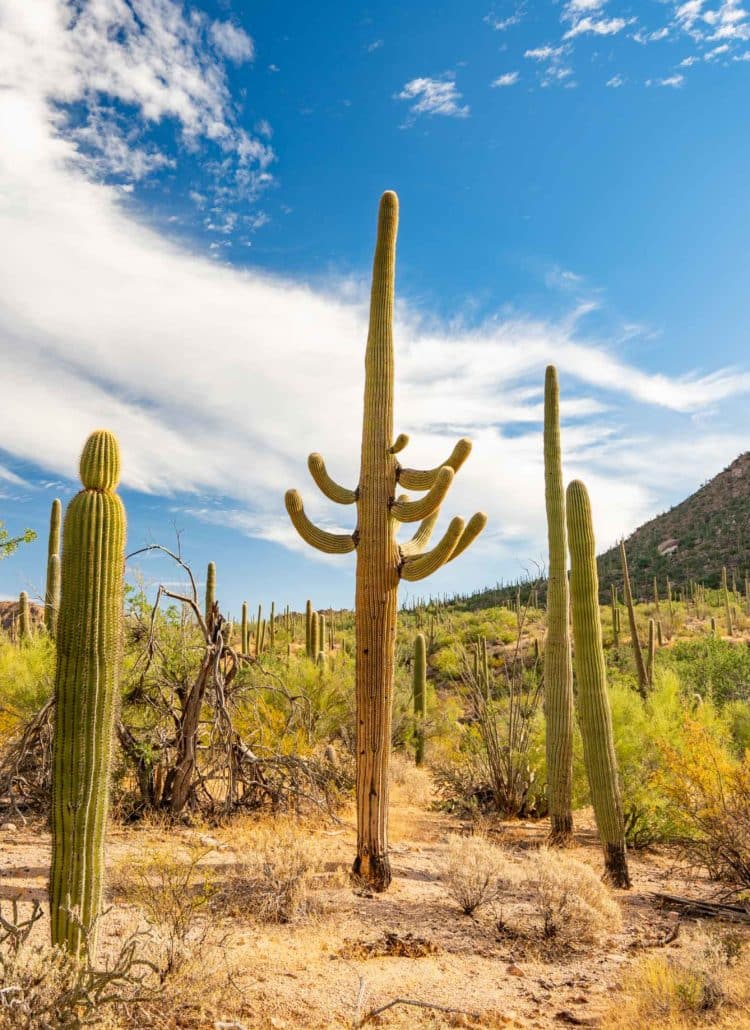
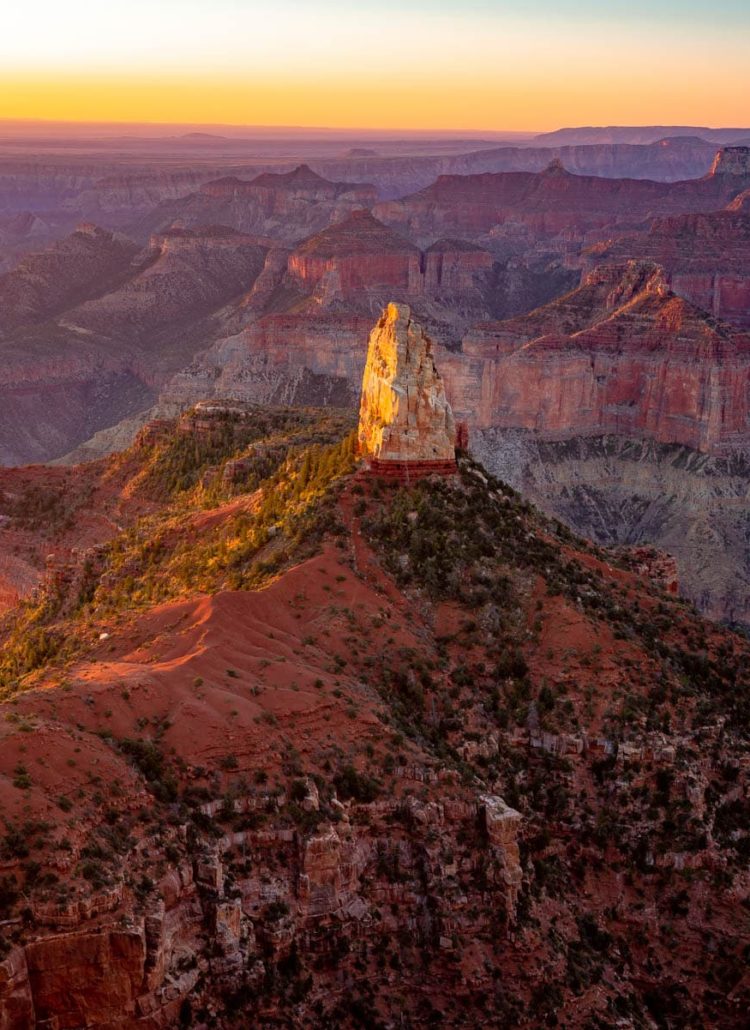
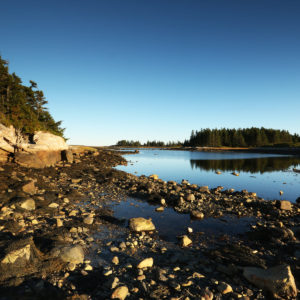

Just a heads-up: Horseshoe Bend is not part of Grand Canyon National Park. It’s in Glen Canyon National Recreation Area. I have seen this photo on the MSN website, identifying it as in Grand Canyon, but it is not.
Hey Hugh,
Thanks so much for the call out. That photo always seems to be getting mislabeled in the archive. I’ve been to Horshoe Bend and you are absolutely correct, it is not in the Grand Canyon!
Cheers,
Will